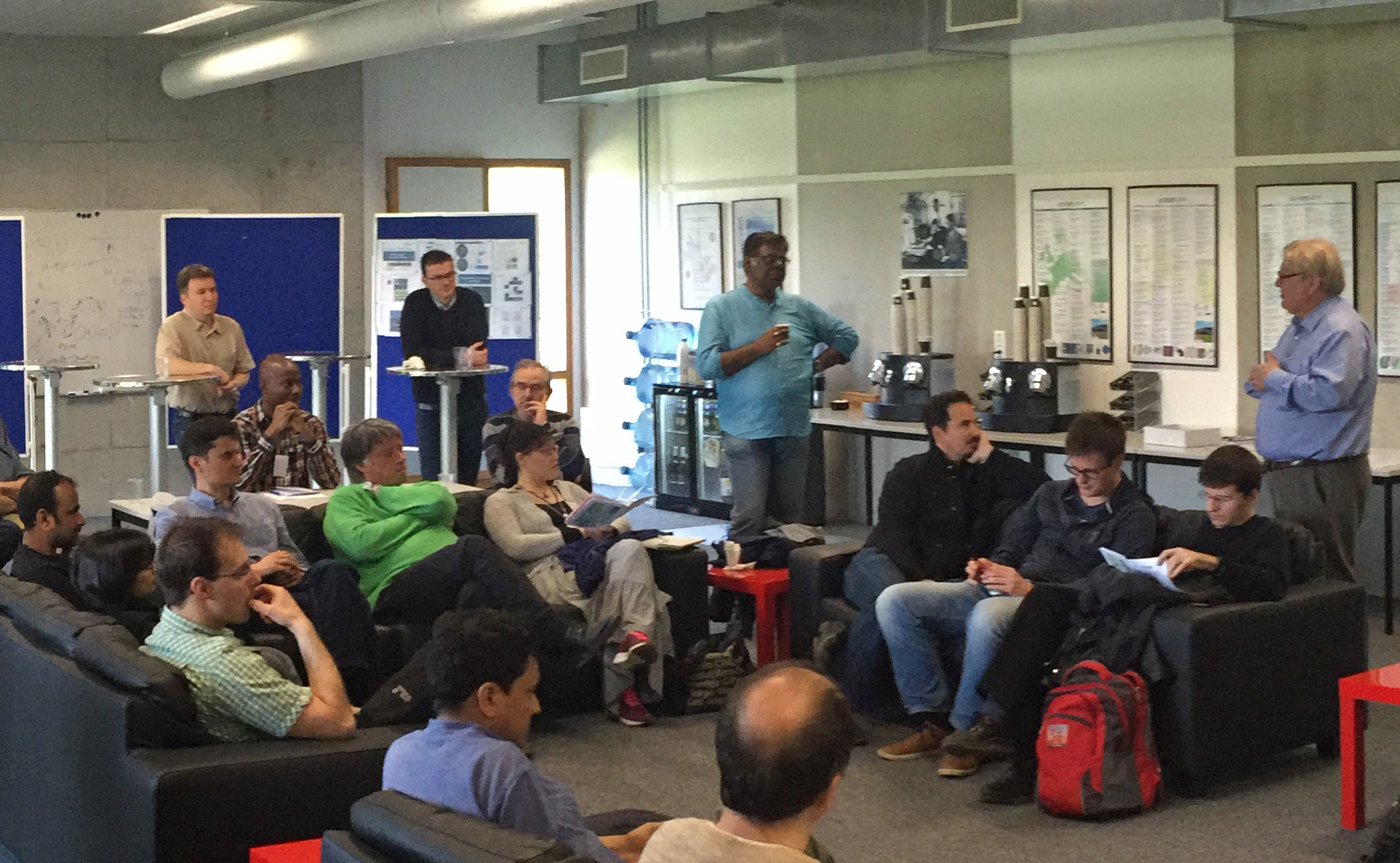News
Surajit Sengupta
1962 - 2021
Surajit Sengupta, whose innovative and original research addressed diverse problems in soft matter and materials physics using statistical mechanics and computation, passed away tragically on March 18, 2021 of a heart attack, soon after delivering an invited talk at the APS March meeting. Surajit’s untimely death, shocking and deeply saddening to a large academic fraternity, family and friends, occurred at a time when he was deeply excited about work he had pursued in recent years, with great passion and focus, on the nature of rigidity and yielding in crystalline solids.
Surajit started his career with a B. Tech. degree in metallurgy, but during a master’s degree pursued at the Indian Institute of Science, Bengaluru, his interests moved towards theoretical condensed matter physics. He obtained a Ph. D degree under the supervision of H. R. Krishnamurthy and T. V. Ramakrishnan, studying freezing and structural transitions of colloidal crystals and flux lattices in high Tc superconductors. A very productive postdoctoral phase at the University of Mainz, working with Kurt Binder and Peter Nielaba, led to a long standing collaboration, and the development of an approach characterized by an effective combination of statistical mechanical theory and computation that would continue to mark Surajit’s oeuvre. It also led to interactions with a larger community of colleagues in Europe, particularly in Germany.
Returning to India, Surajit started his academic career at the Materials Science Division in IGCAR, Kalapakkam. It was here that his metallurgical past resurfaced, informing his research agenda on driven solids, in particular the dynamics of structural transformations in solids, such as martensitic transformations, field driven solids and yielding in solids, treated as challenging problems in statistical mechanics. These interests remained with him in his subsequent academic stints at SNBNCBS, Kolkata and the IACS, Kolkata. In 2012, Surajit was invited to be part of the newly established Tata Institute of Fundamental Research, Hyderabad, where he remained till the end. Surajit played a key leadership role in its growth, in particular the activity in soft matter physics and statistical mechanics.
Surajit’s work concerned several interconnected themes in statistical mechanics, soft matter physics, materials science, including the analysis of affine and non-affine fluctuations in colloidal crystals to obtain accurate elastic constants from microscopy, colloids in external fields, nonaffine fluctuations in proteins to identify binding sites and conformational changes, the role of active fluctuations in chromatin organization, the role of non-elastic degrees of freedom in martensitic transformations, and the origin of rigidity and the nature of yielding in crystalline solids. These works were carried out through long term and fruitful collaborations with several colleagues -- Gautam Menon, Madan Rao, Jürgen Horbach and Peter Sollich. The work on yielding in solids involved innovative investigations into the thermodynamic and dynamic aspects of non-affine displacements resulting in new insights and predictions and the promise of further advances from surprising connections to theoretical descriptions of superconductivity and liquid crystal structures. Sadly, Surajit himself will not be there to lead the way in the imminent elaborations of this work.
Surajit was closely involved with CECAM activities in several ways. He was instrumental, in 2007, in organizing the first of the Understanding Molecular Simulation workshops held in India, at JNCASR, Bengaluru, in partnership with CECAM. In the last five years, Surajit presented his new ideas on plasticity at several CECAM workshops in Lausanne, Paris and Milan. At the workshop in Paris in 2017 on “Exploiting finite-size effects in simulations”, he gave a talk on “The equilibrium first-order transition underlying irreversible deformation in crystals” that was very well received by the audience. One of the attendees, Antonio Di Carlo, was so excited by Surajit’s new views on plasticity that, one year later, he organized a workshop in Milan on “Phase Transformations and Plasticity in Crystals” where Surajit gave the first talk on “Thermodynamic origin of rigidity in crystalline solids”.
Those who interacted with Surajit uniformly recall the childlike enthusiasm and excitement he brought to his work and interactions, which made interacting with him pleasant and stimulating throughout. He was a generous, caring and accessible mentor to the students and postdocs he advised. These qualities also contributed to Surajit taking a leadership role, unassumingly and almost inadvertently, in promoting research along lines that he cared about.
Apart from his creative and scholarly engagement with physics, Surajit’s intellectual and cultural interests were wide ranging. He had a deep interest in the history of ideas and culture, in music, treks in the mountains, was a serious photographer and a good painter. Most recently, he was experimenting with sketches using fountain pens (collecting which was a favourite hobby), resulting in a series of sketches that were not only remarkable for their fine craftsmanship, but for their highly original and intriguing themes. On the whole, in science and in life, he was an aesthete, who appreciated and enjoyed the fine and valuable elements of whatever came his way, with great taste and relish. His presence and in particular his enthusiasm for good science and life will be dearly missed by those who had the good fortune to be associated with him.
Jürgen Horbach, Peter Nielaba, Madan Rao, Srikanth Sastry, Peter Sollich

 About
About

